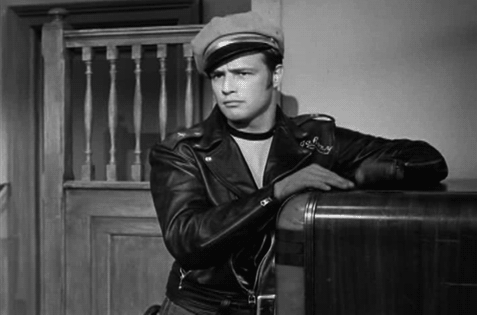The FAR knows how to stay hip and stand out from the crowd! Our clothes approximate cartoon Appalachians, we strike angular poses, we converse with interesting filmmakers while blaring an eclectic mix of pop music. We’re cool, and as we all know, coolness never dies.
Thanks this week to someone who will never go out of style, Miller, for contributing. Send articles throughout the next week to ploughmanplods at gmail, post articles from the past week below for discussion, and be sure to have a Happy Friday.
Esquire‘s Kevin Sintumuang Zooms with David Byrne and Spike Lee as American Utopia gets ready to drop, and the result is context, questions and some eavesdropping on a call with two artistic titans:
[Esquire]: David, I love that in your book How Music Works, there are a lot of passages about choreography and movement. I feel like everyone else considers you a dancer, but you don’t consider yourself a dancer.
[Spike Lee]: He’s a dancer.
[David Byrne]: I guess it’s because I’m not trained, didn’t go to school for it.
SL: Hold up. Did you go to school for music?
DB: I’m self-taught in music, too.
SL: You’re contradicting yourself, brother.
DB: Yes. Thank you.
This week we’re abuzz about the trailer for the new Ron Howard hootenanny, Hillbilly Elegy. Stuart Heritage predicts the fashion trends inspired by Glenn Close’s gen-u-ine country clothin’ for The Guardian, ya’ll:
The bad news is that this scene looks a lot like it takes place at a funeral. The good news, however, is that Glenn Close is rocking the heck out of it. A conservative black outfit simply isn’t for her; not when she can go absolutely out of her mind on gold Aztec patterns. But the outfit isn’t the real star here. That’s her hair. Because it takes guts – real guts – to rock up at a funeral looking like a cow is in the middle of farting directly into your face.
Adam Nation reviews Made Men: The Story Of Goodfellas and how author Glenn Kenny traces the movie’s influence and influences:
Kenny is right on the money when he connects Scorpio Rising’s three-chord Greek chorus to the ecstatic soundtrack cues of Scorsese’s 1973 breakthrough film, Mean Streets, differentiating the director’s use of pop to convey psychic states from the fond nostalgia of fellow movie brat George Lucas’s make-top-40-great-again manifesto of the same year, American Graffiti. If Scorsese is a paradigmatic figure in the yoking of cinema to rock ’n’ roll—a missing link, perhaps, between Anger and Quentin Tarantino—then Goodfellas’ astonishing auditory collage, which begins with Tony Bennett and ends with Sid Vicious while interpolating pretty much everything in between, stands at the apex of his innovations.
At the AV Club, Toussaint Egan finds nothing revolutionary in a TV show about the French Revolution – with vampires:
The series’ weaknesses lie not with the capable cast, but in its writing. “The nobles represent one percent, and yet they command 93% of all riches,” Joseph’s assistant Katell (Isabel Aimé González-Sola) tells him while attempting to track down a lead on the mysterious affliction that’s plaguing Montagris. These kinds of lines make wholly transparent the overall intentions of the show’s producers. It’s historical allegory at its most superficial, a fantasy designed to self-satisfyingly gesture at the egregious wealth disparity of our own time with little other commentary or parallels to speak of when it comes to the lived experiences and complexities of the era in which it is set.
And at her blog, Sheila O’Malley considers how actors use their angles to create character and archetype:
…[S]harp angles don’t exactly exist naturally in nature. Nature is fluid, chaotic, a constant proliferation with no rhyme or reason. And so angles somehow communicate the eternal. Maybe BECAUSE angles don’t exist in nature, outside of tremendous mountain ranges (but even they wear down over time), by twisting your body into sharp angles, you are saying: “I am outside of time.” The figures in Egyptian hieroglyphics … all angles, angles, elbows, necks, headdresses jutting back on an angle, even the fact that they’re standing upright, defying gravity, becomes an angle, their body an angle against the ground they walk on.

